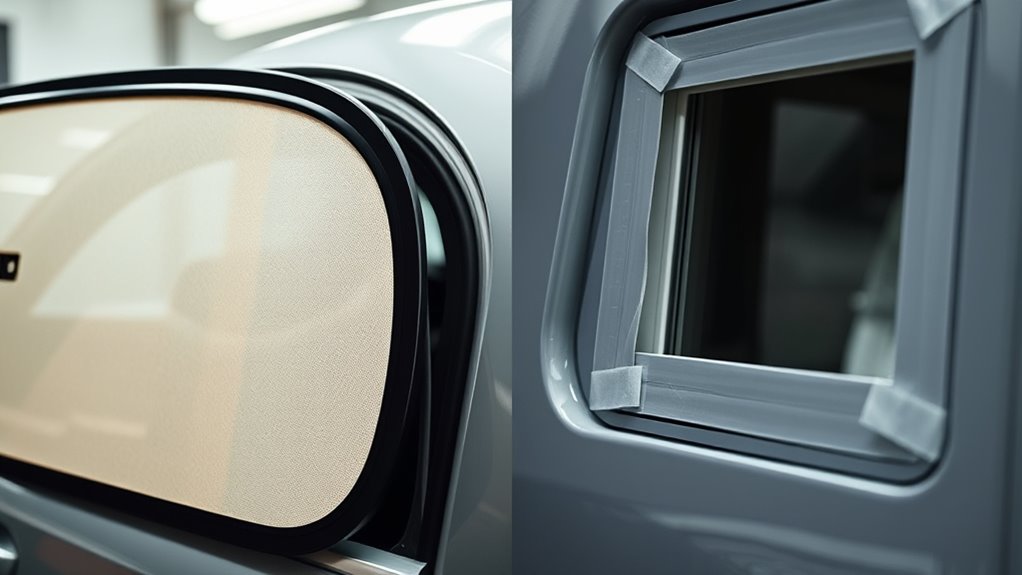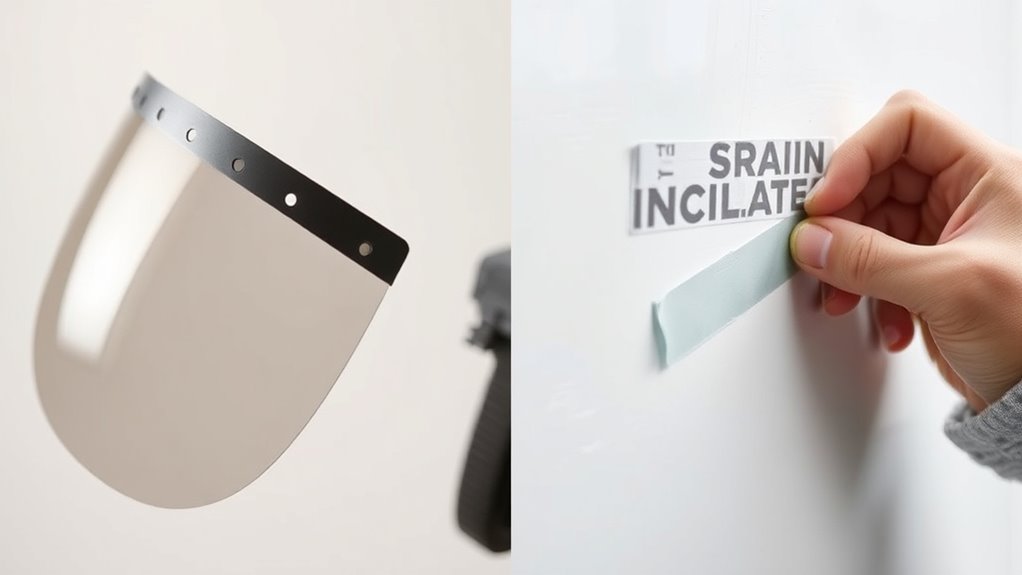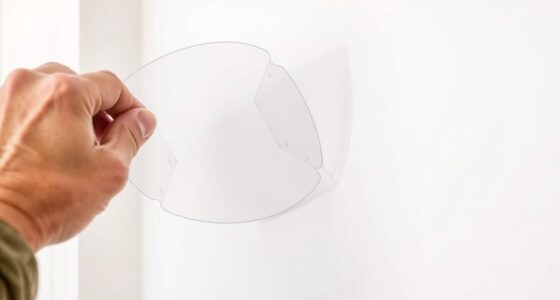Use masking tape when you need precise edges and clean paint lines on surfaces like walls, trims, or fixtures, especially for detailed or multi-color projects. Spray shields are best for protecting larger areas or surfaces from overspray during spraying or airbrushing, allowing you to focus on the main area without worrying about messes. Each tool plays a key role, but understanding their specific uses will help you achieve professional results every time. Keep going to discover more about when and how to choose the right protection.
Key Takeaways
- Use masking tape for precise edges and detailed areas, especially around trims and fixtures.
- Spray shields are ideal for covering large surfaces or irregular shapes during spray painting.
- Choose masking tape when clean removal without residue is needed after detailed, controlled painting.
- Opt for spray shields when protecting broad areas quickly against overspray or spray splatter.
- Use masking tape for projects requiring sharp lines, and spray shields for broad coverage or complex shapes.

When you’re painting edges, trims, or around fixtures, masking tape is your best choice. It adheres well to most surfaces and removes easily without damaging the underlying material. Masking tape allows for precision, giving you control over where the paint goes. It’s also useful for multi-color projects, where different sections require different paints or finishes. You can tape off sections, paint, and then remove the tape without worrying about bleeding or uneven lines. Additionally, selecting the appropriate adhesive strength of masking tape ensures it stays in place during painting but still removes cleanly afterward.
Frequently Asked Questions
How Do Spray Shields Impact Paint Finish Quality?
Spray shields help protect surrounding surfaces, ensuring your paint finish stays smooth and clean. They prevent overspray from settling on unintended areas, reducing the need for touch-ups and rework. By controlling overspray, spray shields allow you to achieve a more professional, high-quality finish. Just make sure you position them properly and choose the right shield size for your project to maximize their effectiveness.
Are Spray Shields Reusable or Disposable?
Think of spray shields as your trusty shield on a battlefield—they’re reusable. You simply clean them after each use, just like washing armor after a duel. While some shields are made for single battles and are disposable, most are durable enough to be used multiple times. So, with proper care, you’ll have a reliable tool ready for each project, saving you time and money.
What Are the Cost Differences Between Spray Shields and Masking?
Spray shields are generally more cost-effective over time because you can reuse them, reducing replacement expenses. Masking tape and paper are usually disposable, leading to ongoing costs with each project. While spray shields might have a higher upfront price, they save you money in the long run by eliminating the need for frequent replacements. Your choice depends on your project scope and budget, but reusable spray shields often offer better value.
Can Spray Shields Be Used With All Types of Paints?
Yes, spray shields can be used with most types of paints, including latex, oil-based, and specialty coatings. They’re versatile tools that protect surfaces during spraying, making them ideal for various projects. Just verify you select the right shield size and material for your specific paint type. Proper cleaning and maintenance will help you get the best results and extend the shield’s lifespan, regardless of the paint you’re using.
How Environmentally Friendly Are Spray Shields Compared to Masking Materials?
Spray shields are generally more environmentally friendly than masking materials because they are reusable and reduce waste. Unlike disposable masking tapes and papers, spray shields can be cleaned and used multiple times, minimizing landfill contributions. They also help limit overspray, reducing unnecessary paint usage and VOC emissions. By choosing spray shields, you’re making a more eco-conscious choice that supports sustainability and decreases your overall environmental impact during painting projects.
Conclusion
Ultimately, choosing between spray shields and masking depends on your project’s specifics. While some believe spray shields offer faster, cleaner results, others argue masking provides more precision. The truth lies in understanding your needs—if speed matters, spray shields might be your best bet; for detailed work, masking could be better. By evaluating your project’s demands, you can confidently select the right method, ensuring professional results every time.










